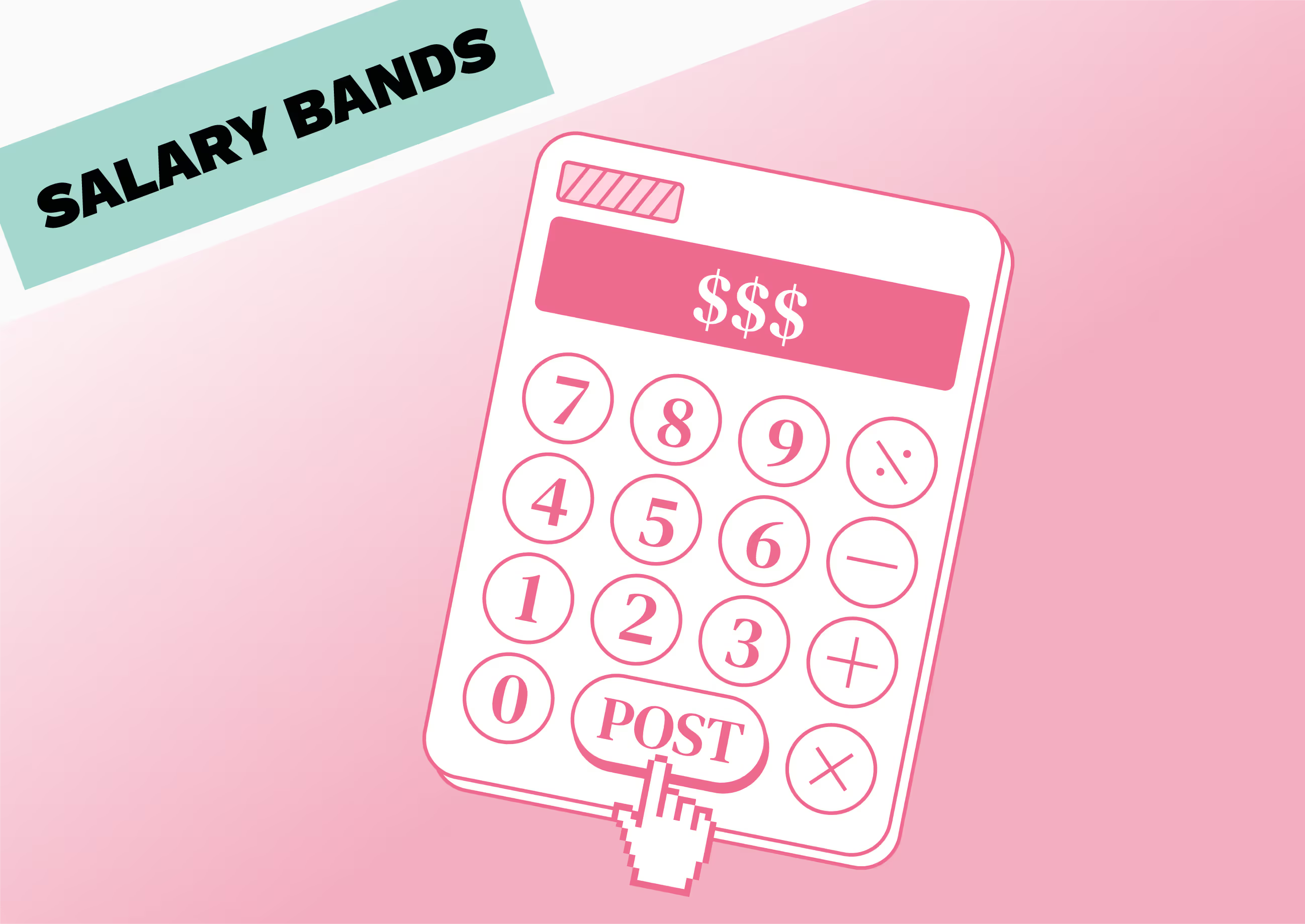Salary Bands are created; what’s next?
Your salary ranges are made... but what's next?
Evaluating the ranges and preparing to share to your team of course. Follow along with these 3 steps to make sure you're set up for success!
#1 Position your current employees on these ranges to spot potential gaps
Ideally, you don’t create your bands based on your current employee’s salaries.
This means it’s likely that you’ll notice gaps once you’ll position your employees on your grids, and those gaps are OK!
What do you do with those salary gaps?
For each employee, determine where you position them within their level, not taking compensation into consideration.
For that, you want to define a positioning scale, some companies use sub-levels, and others use ratings.
A simple framework to start with could be:
- Between Minimum and Mid-Point = Entry level, still acquiring most skills of the level, needs time and experience to develop
- Mid-Point = Fulfils the expectations at the current level in terms of skills and performance
- Between Mid-Point and Maximum = Has started developing skills of the next level, should be promoted quickly
#2 If any gaps exist, determine the true budget necessary to position everyone where they should be in your new ranges
To avoid compromising your leveling system, you shouldn’t assume that because someone is “within their level’s range,” they are fairly compensated.
If your initial evaluation was that they are fulfilling expectations of their level, they should be at the mid-point and nowhere lower, which may lead to some compensation adjustments whenever you create or update your salary bands.
Once your budget is defined, depending on your financial constraint, you can either implement the true-up directly or spread it over several compensation review cycles.
#3 Validate the bands with all the different stakeholders
The last step to validate your salary bands will be to lock them with your stakeholders.
To onboard them, you want them to understand:
Why you built them → how is it going to change their day-to-day?
- The finance team will have more clarity on budgeting from a hiring plan
- Managers will focus more on growth and development; compensation should be an automatic follow-up step
- The leadership team will be able to promote fairness and transparency globally
- The people team will spend less time managing exceptions and negotiations
How you built them → is everyone aligned on the company’s positioning?
- If you build your bands on a compensation philosophy that not everybody agrees with, it will soon be conflictual
- You want to pay at-market when your managers think you should pay above market: you will always have endless discussions!
- Make sure everyone commits to the compensation policy criteria so the rollout of the bands makes sense to everyone.
It’s not over yet… don’t forget to monitor your salary bands! It’s not because you’ve created your salary bands that the job is all done yet!
The market is forever changing, and particularly in our current economic context, things are moving very fast.
We highly recommend that at least once a year, but even better, twice a year, you monitor the health of your salary bands:
→ Is your mid-point still aligned with your initial market positioning?
→ What does it mean at an employee level? Do you have employees paid below market? Out of range?
→ Is your overall compensation policy still consistent with your philosophy?
.avif)




